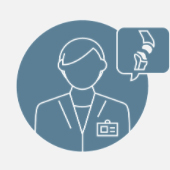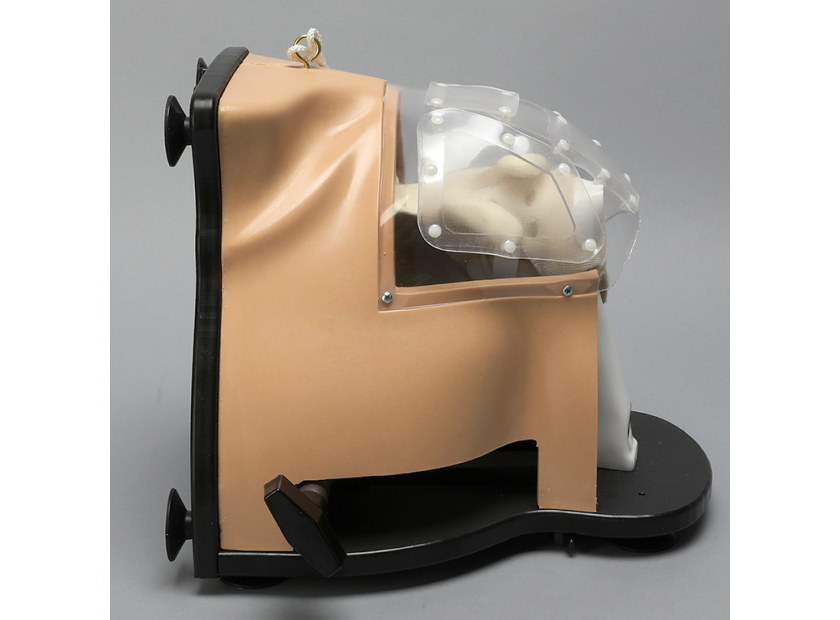Shoulder Arthroscopy Simulation Training Has a History Rooted in Medical Advancements
So authentic it found life beyond the classroom as a resource for practicing surgeons to hone new techniques, the Alex range of advanced shoulder arthroscopy simulation models is a prime example of how engineering can partner with leading medical minds to create cutting-edge resources.
Developed with the leadership of shoulder arthroscopy pioneer Dr. Stephen Snyder, the Alex series has been a standard of medical instruction since its introduction in the 1990s. Now in its third iteration, the model is established as one of the most effective means of allowing students and professionals to learn to manually manipulate instruments using a camera, arthroscope, and live image via tablet, laptop, or other screen.
Since its creation, the Alex model has been expanded to simulate all major shoulder arthroscopy procedures. The continuing advancement of medical training model features and materials means this seminal resource will continue to evolve with industry best practices and advances.
Practice Followed by More Practice
Dr. Snyder saw the need for an authentic shoulder arthroscopy simulation because, as he says himself, shoulder arthroscopy is an extremely demanding manual art that can only be perfected by practice followed by more practice. Research has since vindicated this belief by establishing that the average specialist will complete around 250 procedures before mastering the most advanced techniques.
The volume of exposure needed to prepare experts for the operating room can overwhelm the available resources of clinical settings and cadaveric alternatives. Indeed, the expense, poor quality, and moral, regulatory, and storage/disposal complications of biological models make their use highly problematic—not to mention the fact they can create a poor first experience for novice practitioners.
Instead, Dr. Snyder teamed with a group of leading medical training model engineers to create a life-size shoulder arthroscopy simulation that was found on its release to be as effective as cadaver-based methods in teaching fundamental knowledge of diagnostic procedures. The Alex Shoulder Professor was named for Dr. Snyder’s good friend Dr. Alessandro Castagna. In the 1980s, Dr. Castagna was visiting from Milan, Italy, and had shoulder surgery, leading to the eventual development of the simulator and becoming its namesake. He is now one of the most preeminent shoulder surgeons in the world and his name is known across medical education—a testament to the success of the Alex project, his teaching skill, and personality.
For Students and Experts Alike
The appeal of the Alex lies in its range. The original model was designed to recreate the most common shoulder arthroscopy applications with a new level of authenticity. These procedures were:
- SLAP lesion repair
- Bankart reconstruction
- Rotator cuff repair
- Knot tying techniques
The Alex II and Alex III models that have been released over the past 15 years have since expanded this range to include:
- Biceps tenodesis (arthroscopic)
- PASTA (partial articular supraspinatus avulsion)
- Subscapularis tendon repair
- Remplissage fractures
The Alex III features a moveable proximal humerus that can be rotated through normal range of motion and locked into place for use. It also has a joint space between the humerus and glenoid that can be increased or decreased and locked into position.
All the units are built around cutting-edge medical training materials, such as a foam cortical shell that includes realistic internal cancellous material, replaceable soft tissue with skin, a clear modular portal cap, and the option of a closed model.
The authenticity and performance of these materials has given the Alex series an unexpected life. Not only is it widely used as a teaching resource in medical schools, but it has also been found to give surgeons the chance to practice new techniques before applying them to live patients.
Expert Authenticity
The realistic performance of the Alex series is on full display in this early YouTube clip. In it, the Alex is used to recreate several foundational shoulder arthroscopy procedures while being placed in direct comparison to footage from a corresponding live operation.
Dr. Snyder and his colleagues are so confident in the ability of the Alex series to prepare students and professionals alike for live operating room settings they have placed it at the forefront of a dedicated training facility. The Center for Learning Arthroscopic Surgery (or CLASroom) in Los Angeles offers visiting specialists the chance to perform hundreds of procedures on “dry” shoulder arthroscopy simulation models under expert guidance until they are confident they can perform tasks such as rotator cuff repair on their own.
The Alex models that are currently improving the psychomotor skills of a generation of orthopaedic surgeons owe their existence to the vision of Dr. Snyder and the expertise of the medical training model engineers that worked to make it a viable reality.
Partnering for Pioneering Products
Dr. Snyder embarked on the Alex project because of his frustrations with trying to teach arthroscopic procedures with cadaveric parts. What he wanted was an authentic model that could be used over and over again with reliable performance so that students could reduce the steep learning curve associated with complex psychomotor instrumentation.
In cooperation with a leading team of medical resource engineers, he was able to produce a kit including an arthroscope, a light source, a coupler, and a video camera so that a laptop computer could act in place of an expensive surgical set-up. The ongoing nature of the Alex partnership has meant the unit could be updated, as the technology of 1991 was radically overtaken by the benefits of the digital revolution, which continues at pace today.
In fact, today’s leading medical instructors and teachers have access to a whole new range of materials and technologies with which to create their own cutting-edge training resources.
These features include:
- Model expansion: Instructors can alter models in response to the improving technical abilities of their students.
- Dual usage: Models can be used in both open and closed settings.
- Haptic feedback: Models produce noise or vibration when a device comes into contact with internal materials.
- Radiopaque materials: Materials block radiation and enable advanced medical imaging use for treatment or diagnostic practice.
These technologies can be included in models produced for the exclusive use of a particular course, or, as happened with the Alex, they can be pushed into a global marketplace.
Modern model advancements mean the next Alex success is only a productive partnership away.
A Shoulder Arthroscopy Simulation Success
Dr. Snyder’s successful application of a non-biological solution to complex arthroscopic training is a highly repeatable one. His understanding of the problem at hand—the drawbacks of clinical and cadaveric dependence—gave engineers a clear goal. His expertise meant their materials and production science could be applied with the precision needed to change the way medicine is taught.
With the right partner, there is no limit to the number of Alex-like successes that can be produced to aid the development of future medical specialists.
Sawbones professionals can guide you through the process of creating a medical training model that fits the exact needs of your course or practice. For more information on our offerings or to talk about custom training models, contact us at 206-463-5551.

If you're seeking something you can't find on our website, our sales team is happy to help. We can either direct you to the right model or provide a free quote on the right custom project to meet your needs. Discover options with our clear bone models, laminated blocks, custom displays, or other machining projects.








